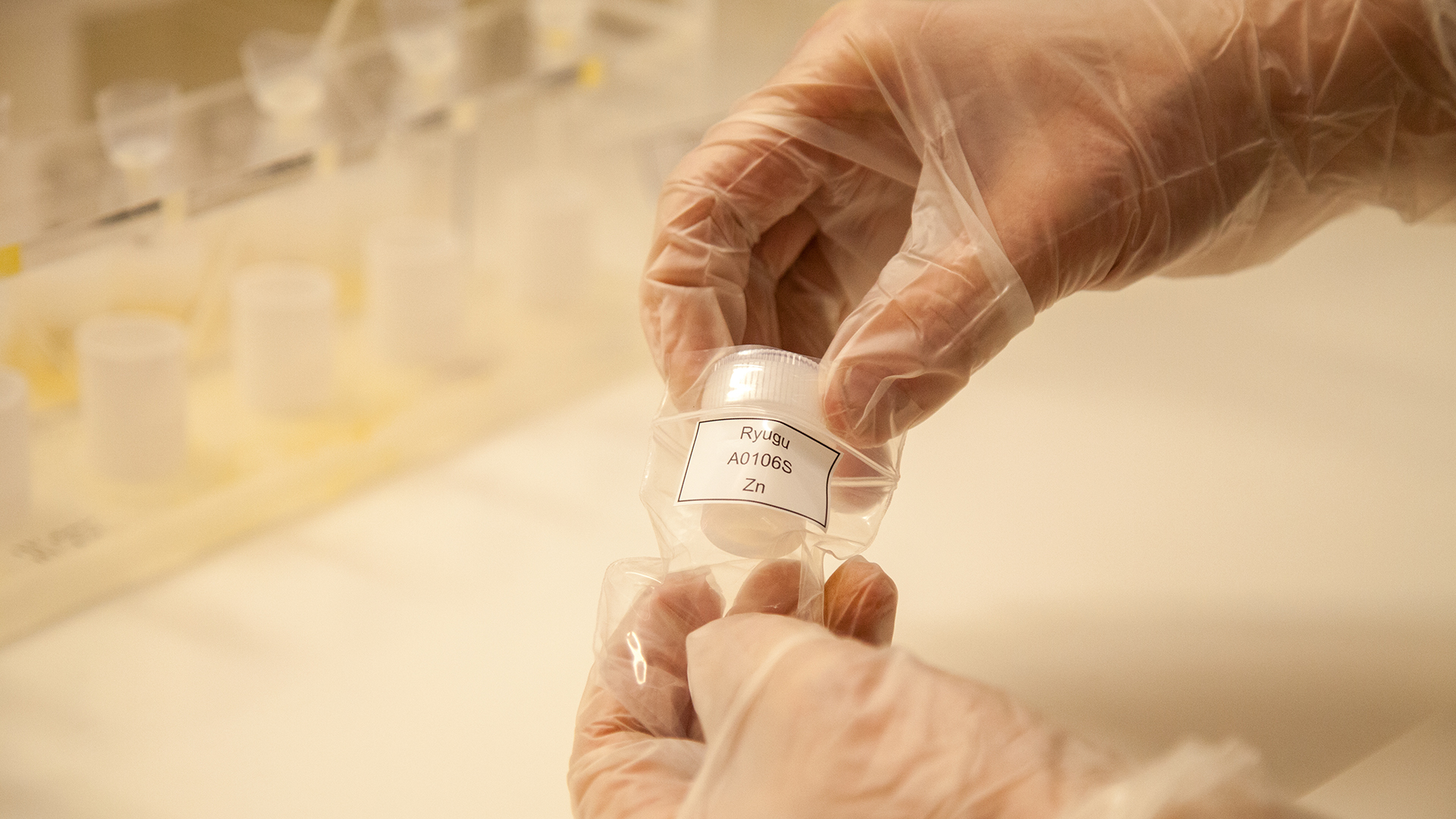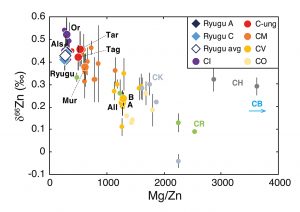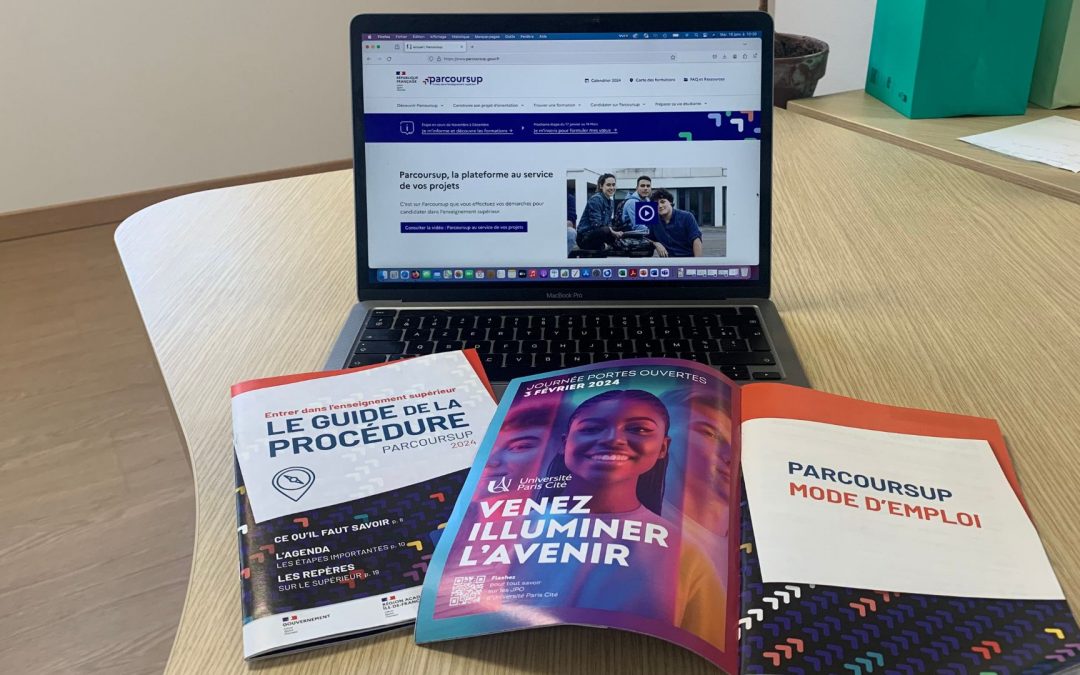Ryugu: Asteroid Samples Continue to Shed Light on Solar System History

© IPGP
Samples of asteroid Ryugu analysed at IPGP
Nearly two years after Japanese mission Hayabusa2 returned to Earth, samples from asteroid Ryugu continue to reveal valuable information about the history of the early solar system. A study by scientists from the Institut de Physique du Globe de Paris, Université Paris Cité and CNRS, as part of an international consortium, reveals the isotopic composition of zinc and copper of asteroid Ryugu. The isotopic signatures show that Ryugu’s composition is close to Ivuna-like carbonaceous chondrites, and that Ryugu-like material from the outer solar system accounts for ~5-6% of Earth’s mass. These results are published on 12 December 2022 in the journal Nature Astronomy.
Meteorites found on Earth give scientists access to samples representing the first moments of the solar system. However, the return to Earth in December 2020 of the Hayabusa2 mission, operated by the Japanese space agency JAXA and bringing back 5 grams of fragments from the asteroid Ryugu, marks a major step forward by offering the possibility of analyzing samples unaltered by their arrival and stay on Earth. The first analyses, carried out by an international team, including researchers from the Institut de physique du globe de Paris, Université Paris Cité and the CNRS, have shown that the composition of the asteroid Ryugu is close to that of Ivuna-like carbonaceous chondrites (CI) – the most chemically primitive meteorites, and considered to have the composition closest to the Sun. However, some isotopic signatures (e.g., titanium and chromium) overlap with other groups of carbonaceous chondrites, so the details of the link between Ryugu and CI chondrites are not yet fully understood.
Zinc and copper are two moderately volatile elements, and are key elements to study the processes of accretion of volatiles during the formation of telluric planets. The different groups of carbonaceous chondrites show distinct zinc and copper isotopic compositions, with the CI chondrites being the more enriched in volatile elements. By carrying out additional analyzes of the zinc and copper isotopic composition of Ryugu, the scientists had access to a crucial tool for studying the origin of the asteroid.

Zinc elemental and isotopic compositions for Ryugu and carbonaceous chondrites samples. (Source: Contribution of Ryugu-like material to Earth’s volatile inventory by Cu and Zn isotopic analysis, Marine Paquet, Frederic Moynier, Tetsuya Yokoyama et al., Nature Astronomy, 2022)
The international team showed, in a study published on December 12th, 2022 in the journal Nature Astronomy and led by Marine Paquet and Frédéric Moynier, cosmochemists at the IPGP, that the isotopic ratios of copper and zinc in the samples from Ryugu were identical to CI chondrites but different from all other types of meteorites. By finally confirming the similarity between Ryugu and CI chondrites, this study establishes that these primitive samples from Ryugu represent the best estimate of the solar composition to date for copper and zinc.
Finally, the zinc isotopic composition of Ryugu can also be used to study the accretional history of moderately volatile elements on Earth, which are essential for the development of planetary habitability. The study also demonstrates that the contribution of Ryugu-like material represents about 5% of the Earth’s mass.
> Bibliography:
Contribution of Ryugu-like material to Earth’s volatile inventory by Cu and Zn isotopic analysis, Marine Paquet, Frederic Moynier, Tetsuya Yokoyama et al., Nature Astronomy, 2022, DOI : 10.1038/s41550-022-01846-1
Read more

CVEC Crous #Hiver2026 : financez vos initiatives pour enrichir la vie étudiante !
Vous avez une idée de projet pour améliorer la vie étudiante à Paris ? L’appel à projets CVEC (Contribution Vie Étudiante et de Campus) du CROUS de Paris est ouvert ! Associations étudiantes, agents, services, directions ou composantes d’UPCité peuvent, sous certaines...
read more
Une mère sur quatre concernée par des soins irrespectueux en maternité
S’appuyant sur l’Enquête nationale périnatale de 2021, une équipe de chercheuses associant notamment l'Université Paris Cité révèle qu’un quart des mères en France seraient concernées par des soins irrespectueux en maternité, associés à un risque accru de dépression...
read more
Parcoursup : trouver nos formations
Université Paris Cité propose une variété de formations en phase avec les métiers d’aujourd’hui et de demain : 81 licences, 42 licences professionnelles, 23 double licences, 1 cursus d’ingénieur, 7 B.U.T, 260 masters et 21 écoles doctorales. Université Paris Cité...
read more
Meet-Up 2025 : plus de 100 participants réunis pour les sessions d’information organisées par l’Université Paris Cité sur les appels européens MSCA Postdoctoral Fellowships
Afin d'offrir aux post doctorantes, aux post doctorants et à leurs superviseurs le meilleur soutien possible pour une candidature réussie et de grande qualité aux appels MSCA Postdoctoral Fellowships (MSCA PF), le Réseau Recherche Europe, coordonné par l’Université...
read more